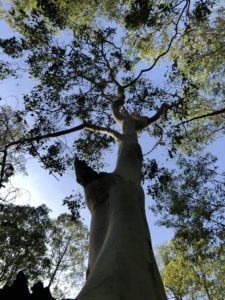Hi Everyone,
The theme of this week’s newsletter is the perennial spiritual theme of learning to live more fully into the present moment. This week’s article is on the subject of how and why our ego resists living in the present moment, and gives a specific technique for us to start tackling this resistance.
Yours in the spirit of presence and being present,
Toby

Article of the Week:
Your Ego as Resistance to What is Present
Ego is a word that means different things in different contexts, but from a meditative point of view, one of the most practical, useful definitions that I have found is that our ego is simply our resistance to what is present in our life right nowor, put another way, our tendency to wish that the reality in front of us was not there because it does not conform to the reality that we want or wish to be there.
Because our ego is constantly resisting what it present in our life we could say that the ego is actually the source of all our stress and suffering that we experience. To give a couple of examples:
Example 1: If we have gotten the flu our ego may say things like “This is a lousy time to get the flu because I have this important project on”, or “Why do I always get sick!” Our ego may even try and deny the symptoms that we are sick and continue with our life without slowing down, thus making us even more sick in the long term.
Example 2: If we wish for our partner’s approval regarding something we have done, if s/he does not give us that approval our ego will fight that reality. Rather than accepting what has happened and thinking about what might be the best way to proceed we either try harder for the approval that they are clearly not giving, or we try and punish them for the perceived insult.
In both of the examples above our ego takes the challenge of the situation and turns it into a stressful, painful battle that makes the situation intolerable. We find our ego creating all sorts of mental strategies to avoid the present moment, resist what is present and instead disappear off into a mentally created world that is different from what is actually there.
The ego’s resistance to what is present in our life is one way of describing the dynamic of what the Buddha called “dhukka” or “suffering”; Whenever there is resistance to what is present in our life, there is imbalance and suffering. Correspondingly, whenever there is a letting go of that resistance and a corresponding full movement into the present moment, there we find liberation.
An Exercise to Begin Observing and Releasing the Resistance of the Ego.
A simple technique for releasing the ego’s resistance to the present moment whilst in the midst of your day to day activities is take time regularly in your day to take a few breaths in the following manner:
As you inhale quietly or mentally say to yourself “release”, then as you exhale say“resistance”. As you breathe in this manner consciously let go of any resistance that you ego is having to whatever is going on in your life, and allow your mind to rest in a state of alert acceptance of what is.
Once you are familiar with this basic practice you can make it slightly more insightful by doing the following:
Before you start your series of “release/resistance” breaths, take a little time to note the nature of whatever your resistance may be to the present moment. For example
- Are you resisting the present moment due to a pleasant past memory that you wish was here with you now?
- Is your mind hankering after a sense of contentment that is apparently not attainable within the present circumstances?
- Is it negative anger or another disruptive emotion regarding an unresolved situation that is making you resist what is in front of you?
- Is sadness or a sense of loss preventing you engaging with what is there with you right now?
Take a little time to get in touch with the specific nature of your ego’s resistance before you try and release it. Then as you engage in your “release/resistance” breathing focus on specifically letting go of the ego resistance that you are feeling right now.
Doing this exercise for 1-3 minutes, three or so times a day over the next week will give you a good start in your journey of letting go of your ego’s resistance to the present moment.
© Toby Ouvry 2011, you are welcome to use or share this article, but please cite Toby as the source and include reference to his website www.tobyouvry.com



 Article of the Week:
Article of the Week: Article of the Week:
Article of the Week:

